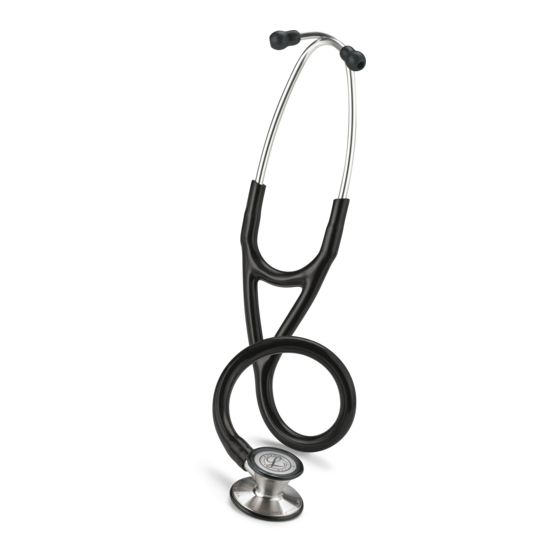3M Littmann Cardiology III Manuel rapide - Page 3
Parcourez en ligne ou téléchargez le pdf Manuel rapide pour {nom_de_la_catégorie} 3M Littmann Cardiology III. 3M Littmann Cardiology III 6 pages. Stethoscope

Instructions for Use
Chestpiece
On Littmann stethoscopes with traditional combination
chestpieces, it is necessary to open the side of the
chestpiece being used. This is accomplished by holding
the chestpiece stem in one hand and rotating the
chestpiece with the other hand until a click is felt.
Changing Frequencies Using the
Tunable Diaphragm
Your Littmann Cardiology III Stethoscope is equipped
with a patented tunable diaphragm that enables you to
listen to both low and high frequency sounds on either
chestpiece side.
Should you prefer a traditional bell, a nonchill bell
sleeve is included as a spare part.
To listen to low and high frequency sounds without
removing and repositioning the chestpiece, simply
alternate between light and firm pressure on the
chestpiece.
Low frequencies: To
listen to low frequency
sounds, (traditional bell
mode) use very light
skin contact.
High frequencies: To
listen to higher
frequency sounds,
(traditional diaphragm
mode) press firmly on
the chestpiece.
Headset Adjustment
Correct
Incorrect
2
Your new Littmann
stethoscope is designed to
provide a comfortable,
acoustically sealed ear fit.
Notice that the eartubes are set
to accommodate the typical
anatomy of the ear canal. The
eartips should point in a
forward direction as you insert
them into your ear canals.
To reduce spring tension in
the headset, hold each eartube
at the bend near the eartip and
gradually pull apart until fully
extended.
To increase spring tension,
grasp the headset with one
hand where the eartubes enter
the tubing and squeeze until
the tubing on one eartube
touches the other. Repeat as
necessary.
For maximum acoustic
performance, comfortable
patented 3M™ Littmann®
Soft-sealing Eartips are
provided with your
stethoscope. This stethoscope
utilizes a unique design for
